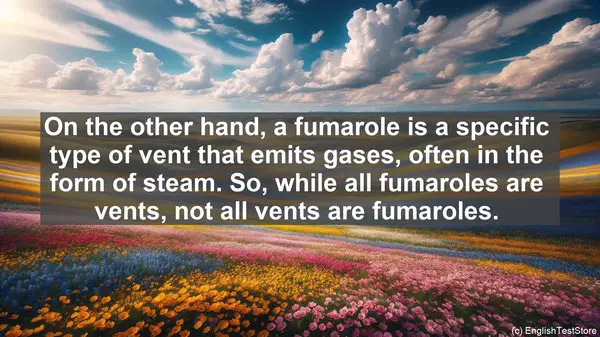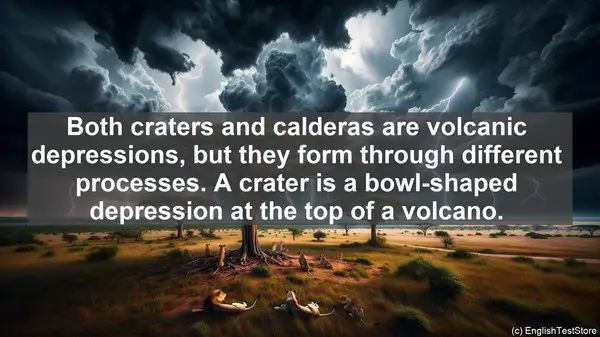Introduction
Volcanology, the study of volcanoes, is a fascinating field. However, it’s not without its challenges. One such challenge is the numerous words that sound similar but have different meanings. In this lesson, we’ll explore the top 10 commonly confused words in volcanology, helping you avoid any mix-ups in your studies. Let’s get started!
Magma vs. Lava
When we think of volcanoes, we often imagine molten rock spewing out. But did you know there’s a difference between magma and lava? Magma is the molten rock beneath the Earth’s surface, while lava is the magma that reaches the surface. So, magma is underground, and lava is above ground. Remember, magma starts with ‘m’ for ‘middle,’ and lava starts with ‘l’ for ‘lava flow.’
Pyroclastic Flow vs. Lava Flow
Both pyroclastic flows and lava flows are hazardous volcanic phenomena. However, they differ in their composition and behavior. Pyroclastic flows are fast-moving currents of hot gas, ash, and rock fragments. They can reach speeds of hundreds of kilometers per hour and are highly destructive. On the other hand, lava flows are the slow movement of molten rock. While they can be destructive, they generally move at a much slower pace. So, remember, pyroclastic flows are fast and deadly, while lava flows are slow and destructive.
Crater vs. Caldera
Both craters and calderas are volcanic depressions, but they form through different processes. A crater is a bowl-shaped depression at the top of a volcano. It’s usually formed by explosive volcanic activity. On the other hand, a caldera is a much larger depression, often several kilometers in diameter. Calderas form when a volcano collapses or when a large eruption empties the magma chamber, causing the volcano to collapse in on itself. So, craters are smaller and formed by explosions, while calderas are larger and formed by collapse.
Ash vs. Lapilli vs. Tephra
During volcanic eruptions, various types of particles are ejected into the air. Three common types are ash, lapilli, and tephra. Ash consists of fine, glassy fragments, often less than 2 millimeters in diameter. Lapilli are larger, ranging from 2 to 64 millimeters. Tephra is a general term for all the solid material ejected during an eruption, including both ash and lapilli. So, think of it this way: ash is the smallest, lapilli is in the middle, and tephra is the overall term.
Volcanic Bomb vs. Volcanic Block
When we think of volcanic eruptions, we often imagine molten rock shooting into the air. Sometimes, these rocks solidify before hitting the ground. When a solidified projectile is ejected, it’s called a volcanic bomb. Volcanic bombs are usually rounded or elongated in shape. On the other hand, if the projectile is a solid chunk of rock without any molten characteristics, it’s called a volcanic block. So, bombs are rounded and formed from molten material, while blocks are solid and not molten.

Vent vs. Fumarole
Both vents and fumaroles are openings in the Earth’s surface associated with volcanic activity. However, they differ in their characteristics. A vent is a general term for any opening through which volcanic material can erupt. It can refer to the main opening at the top of a volcano or any secondary openings on its flanks. On the other hand, a fumarole is a specific type of vent that emits gases, often in the form of steam. So, while all fumaroles are vents, not all vents are fumaroles.
Phreatic Eruption vs. Phreatomagmatic Eruption
Both phreatic and phreatomagmatic eruptions involve the interaction of water and magma. However, they differ in the water source and resulting eruption. A phreatic eruption occurs when groundwater comes into contact with magma. The intense heat causes the water to flash into steam, resulting in a steam-driven explosion. On the other hand, a phreatomagmatic eruption occurs when magma interacts with a larger body of water, such as a lake or ocean. The water not only flashes into steam but also causes the magma to fragment, resulting in a more explosive eruption. So, phreatic eruptions involve groundwater, while phreatomagmatic eruptions involve larger bodies of water.
Volcanic Winter vs. Volcanic Summer
When a large volcanic eruption occurs, it can have global effects on the climate. These effects are often referred to as volcanic winter or volcanic summer. A volcanic winter occurs when the eruption releases significant amounts of ash and sulfur dioxide into the atmosphere. This can block sunlight, resulting in a temporary cooling of the Earth’s surface. On the other hand, a volcanic summer occurs when the eruption releases primarily greenhouse gases, such as carbon dioxide. These gases can trap heat, leading to a temporary warming. So, volcanic winter is associated with cooling, while volcanic summer is associated with warming.

